Introducing
The latest product development from the fertile minds of the Aeris Global design team.
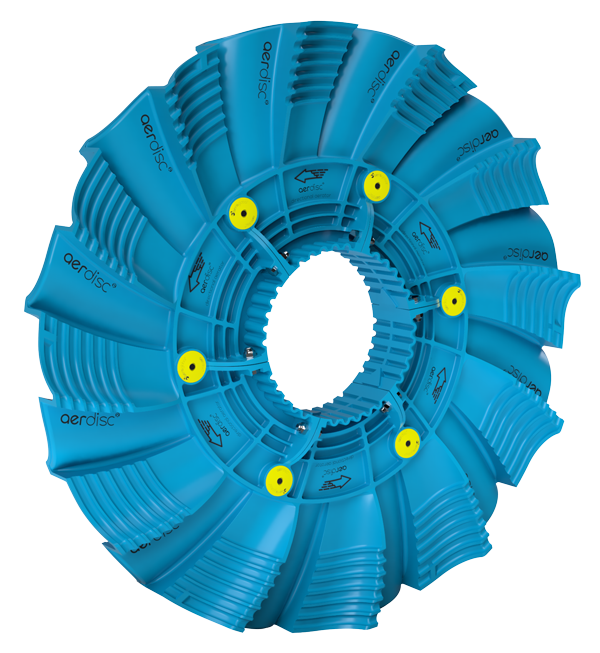
The latest product development from the fertile minds of the Aeris Global design team.

Product Overview
aerdisc® is a multi-disc, horizontal shaft, directional aerator specifically intended for operation in earthen constructed lagoons less than 1.8m deep.
The product has no capacity to harvest rag because the discharge side is completely open with literally nothing to intercept the flow.
The unique segmental disc features reverse curvature; staggered blades on each side; negative space to create
air voids and a myriad of other features to maximise the potential to collect and release air as well as generate horizontal velocity.
The operating principle involves a continuous cycle of capturing atmospheric gases and dissolving oxygen as the partially immersed disc rotates.

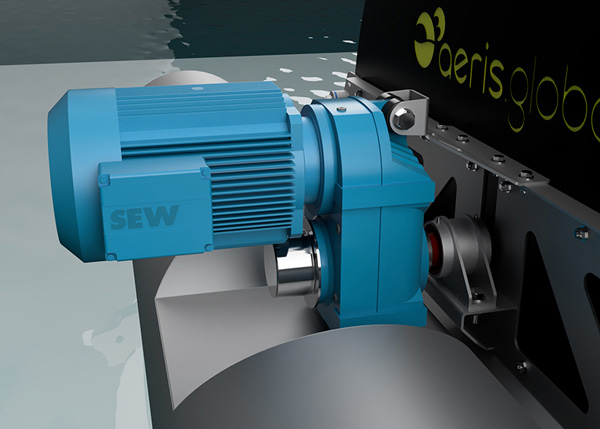
SEW Eurodrive, helical gearmotor with TorqLOC® hollow shaft mounting system. No belts, pulleys, chains, sprockets, or couplings.

100% stainless steel, pillow block bearing housing with double-row, spherical roller insert and unique grease filled seal.

Pontoon features lateral spar with radial linkages allowing each float to move independently, whilst remaining parallel.
aerdisc® is designed for connection to a 9m fully articulated swing-arm attached to an anchor post on the berm.
The swing-arm can be attached to the aerator using any one of three configurations.

LEFT HAND CONFIGURATION Vector of thrust range 90° to -45°

INLINE CONFIGURATION Vector of thrust range 0° to ±45°
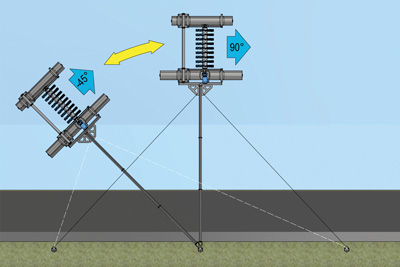
RIGHT HAND CONFIGURATION Vector of thrust range 90° to +45°
As the name suggests, Directional Aeration directs aerator discharge in a particular direction, but the core logic is less
patently obvious.
Directional aeration focuses on mass displacement of water and rapid renewal of the contact area. Water with a low Dissolved Oxygen (DO) level, and therefore the greatest oxygen deficit, is drawn in, charged with oxygen and moved on. In wastewater, the highest rate of oxygen solubility is achieved
when the oxygen deficit is
greatest. Oxygen deficit is the difference between actual oxygen content and the saturation value of the water. The greater the difference the greater the oxygen deficit.
Oxygen transfer is not only influenced by the size of the contact area, but also the rate of contact area renewal. The primary function of any high-performing aerator is to achieve fast and continuous renewal of the contact area. This allows activated sludge with a low DO to be drawn into the aerator before being transformed into an oxygen-rich discharge.

Continuous Multi-phase Cycle
Venturi Effect captures atmospheric gases in the disc voids.
Oxygen depleted wastewater is drawn in to the contact area.
Displacement releases gases from the voids as the disc immerces.
High turbulence transfers oxygen based on the surface area of fine bubbles.
Oxygen charged wastewater is pushed out of the contact area.
Airborne flight transfers oxygen based on the surface area of water droplets.
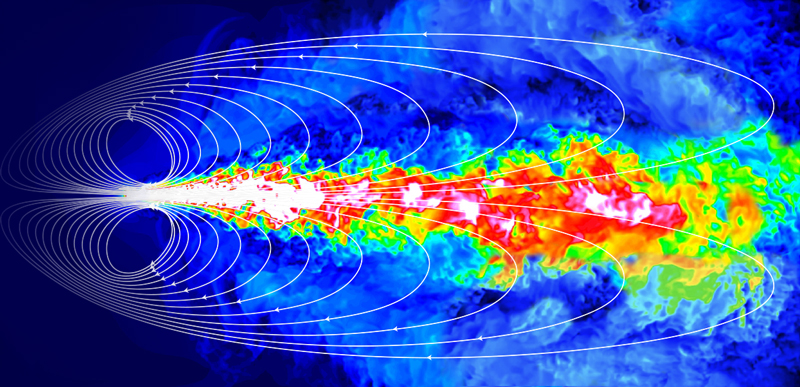
Evolution of the unique aerdisc® shape is based on multiple CFD (Computational Fluid Dynamics) cases and full-scale tank testing at the Aeris Global test facility in Wanaka. Above image: Shows a 7.5kW aerdisc® operating in a 200 x 100 x 1.5m lagoon. This clearly illustrates the Velocity-Contours and flow recirculation.
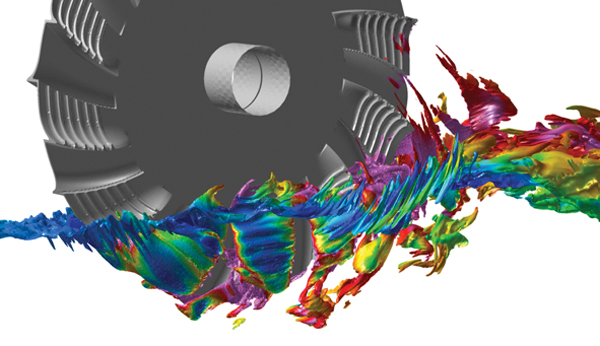
Above image: Shows Velocity-Magnitude and Turbulence-Intensity. This case was also used to prove the effciency of the air capture and displacement process.

